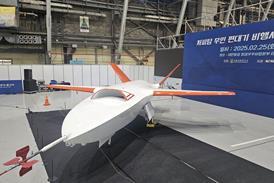Sir - A 350t, 250-seat supersonic transport (SST), more than twice the size of the Aerospatiale/ British Aerospace Concorde was mentioned in an advertisement (Flight International, 4-10 September). You reported a similar concept from NASA of the USA (Flight International, 17-23 April). Could I place these concepts in relation to other reports in Flight International?
In the issue of 28 August-3 September, you report the US Federal Aviation Administration's imposition of new wake-vortex approach separations. When a Concorde visited Heathrow in 1972, its trailing vortices ripped tiles off the roofs of houses beneath its approach. As had been explained by the manufacturer, however, "-one important advantage of the delta wing is that, at low speeds and high angles of attack, attached vortices form in the airflow over the leading edges. These provide increased lift when the aircraft is coming in to land, and there is, therefore, no requirement for 'high-lift' devices in the wing." Delta-wing vortices, therefore, were something special.
Before the Concorde "proving flights" at Heathrow in 1974, the UK Government announced a plan to re-roof 500 houses under the flight path and the then British Airports Authority set up a roof-insurance scheme. Since then, 1,100 houses have been re-roofed and the insurance scheme has been extended to 12,500 houses. The altitude of aircraft approaching to land is about 300ft (98m), less than the 100m length of the proposed Aerospatiale SST. What are the effects expected, from trailing vortices of large delta-wing SSTs, on communities beneath their flight paths?
You criticise the UK Government's decision to lower take-off noise limits by 3dBA at London's airports (Flight International, 18-24 September, P3 and P12). A 3dBA reduction means a halving of noise energy, but a halving of perceived loudness is a reduction of 10dBA. To halve perceived loudness, therefore, requires a reduction of noise energy of more than 90%. The UK Civil Aviation Authority, monitoring aircraft noise at Heathrow, recorded the Concorde producing routinely, at 5km from brake release, noise levels above 130pnDB. To comply with the Heathrow daytime limit of 110pnDB would have meant reducing noise-energy output by about 99%. Since this was inconceivable, the Concorde was exempted. Does anyone claim that the proposed SSTs could operate with a noise-energy output of around 1% of that of the Concorde?
If you add to that the sonic boom, which precludes supersonic operation over land, upper-atmospheric pollution, extravagant fuel consumption and the huge purchase price of any SST, should it be wondered that two US SST projects were cancelled, the Soviet Union's SST project was abandoned and, after years of predictions of sales of hundreds of Concordes, production stopped at the fourteenth aircraft.
RICHARD WIGGS
Biggleswade, Bedfordshire, UK
Source: Flight International























